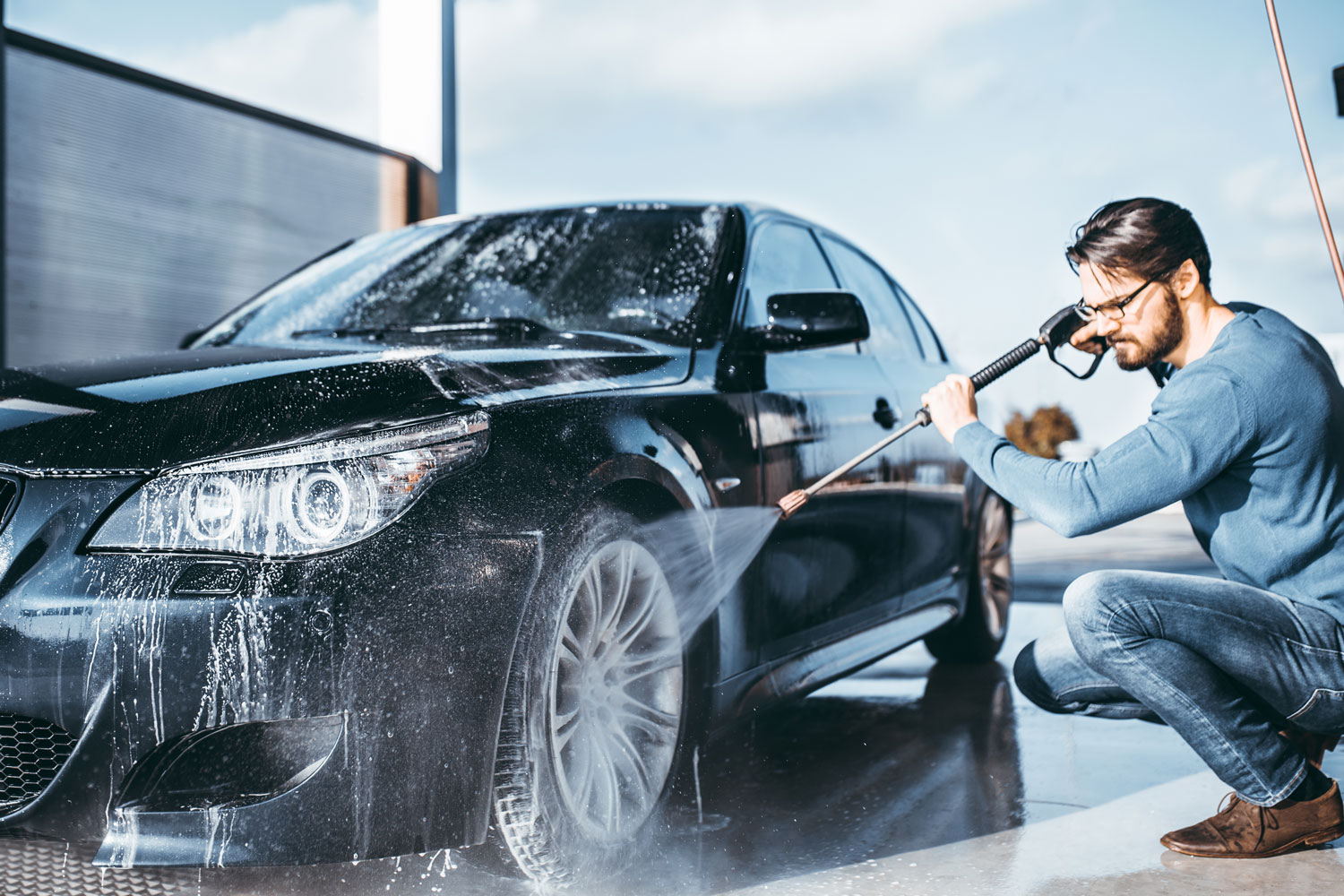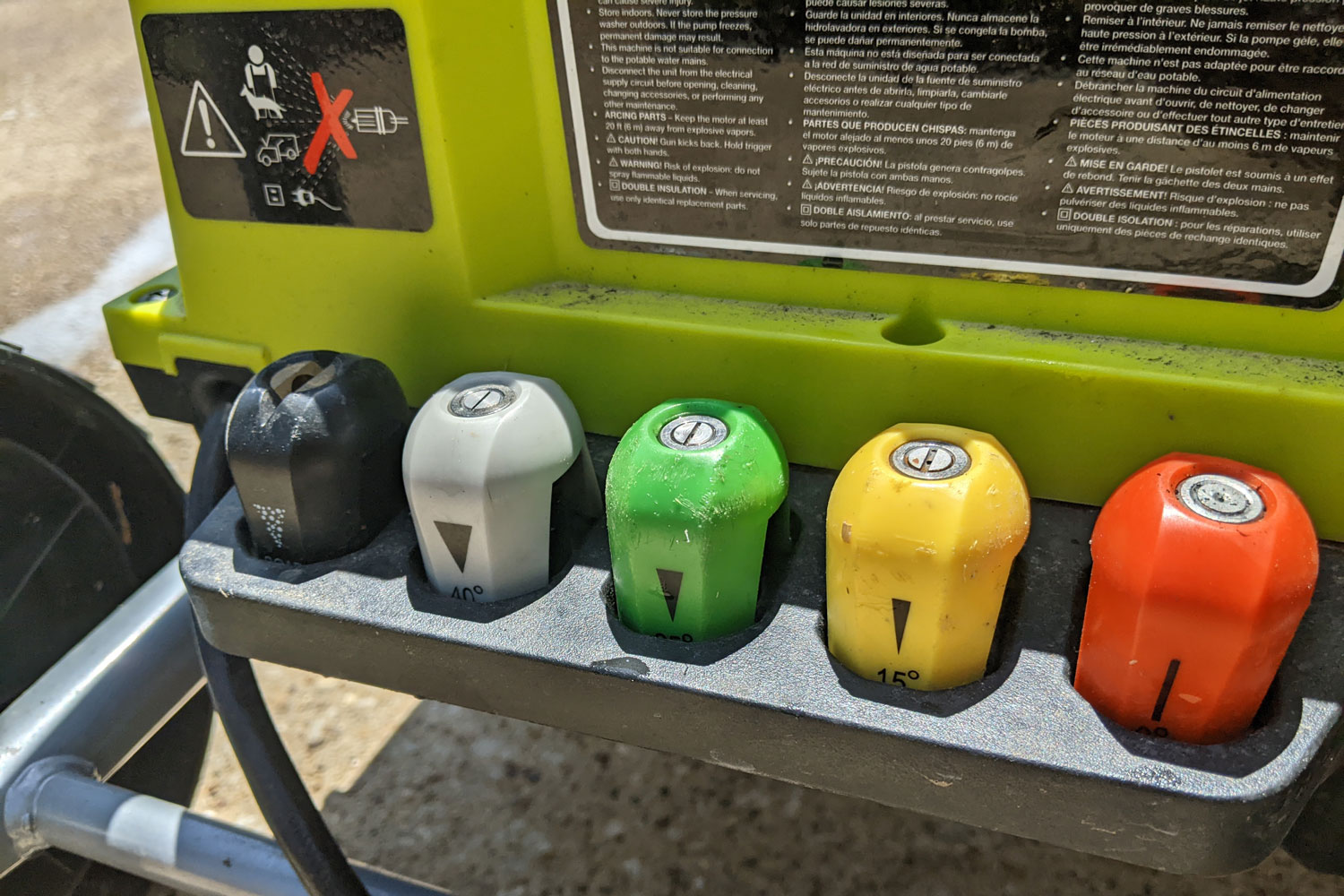Pressure Washing a Car: 5 Steps
These easy-to-use tools can make car washing fast and efficient.
 Shutterstock
Shutterstock
Pressure washing a car can be a highly effective way of scrubbing off dirt, mud, and winter muck. Choosing the right one for the job, however, is not as easy as price shopping.
Also known as power washers, these tools deliver a powerful stream of water to quickly whisk away baked-on dirt and grime. Pressure washers are an all-in-one, car-cleaning tool useful for a wide variety of household cleaning needs, such as removing mildew from siding or rinsing outdoor furniture.
Choosing a Pressure Washer
Basic, electric, light-duty pressure washers, which typically use cold water, can cost less than $100, while high-end gas-fueled models run upward of $600, and can use hot water and higher pressure to better remove.
Electric models typically require a nearby outlet or an extension cord. They run quietly and with no smell, and they tend to take up less space when it comes time to store them. The downside is that electric washers are less powerful than gas models—though, when using one for washing cars, more pressure doesn’t necessarily mean better cleaning.
More recently, cordless pressure washers for cars that use big rechargeable battery packs have become available, though you’ll still need to connect a hose to a water source for most models.
Gas-fueled pressure washers use small motors similar to those on lawnmowers. They are loud, produce exhaust emissions, and require periodic maintenance—not to mention you’ll need a fuel can. Their advantage comes the moment you turn them on: the sheer amount of power offers superior scrubbing power, and the lack of a cord makes them more convenient to move around. But, again, considering needs for car washing, industrial-grade, gas-fueled pressure washers can be overkill.
To understand why, it’s important to look at two figures: PSI and GPM.
PSI (pounds per square inch) notes the maximum amount of pressure the washer delivers. Some models offer the ability to vary pressure. Electric models usually top out around 2,100 PSI, while high-end consumer-oriented gas pressure washers may be rated as high as 3,400 PSI.
Turtle Wax suggests around 1,500 PSI as a safe bet to prevent paint damage, making most electric models more than worthy of the car-washing task.
GPM (gallons per minute) measures the amount of water the pressure washer uses. More water used means more cleaning power. But it also means that for those in areas where water conservation is increasingly scrutinized by municipalities, seeking a model with a lower GPM rating might be worth considering.
You can also rent both types from a hardware store if you don’t want to make a commitment yet.
Pick the Right Settings and Accessories
To prevent clogs and best protect your car’s paint, stick with an automotive soap meant specifically for pressure washers. Some pressure washers have a built-in soap tank, while car detailers like to use foam cannons that turn soap into a thick foam to gently remove dirt.
Besides using the appropriate pressure and soap, you’ll want to make sure you have the correct nozzle attached to the pressure washer wand. These quick-release tips deliver water at more or less aggressive angles, and using a narrow-angle nozzle can damage paint.
 Aaron Miller/Capital One
Aaron Miller/Capital One
Washing Your Car
For pressure washing a car, stick with a 40-degree nozzle (typically white, per industry standards), though a more powerful 25-degree (green) nozzle can be useful for blasting wheels, tires, and the undercarriage.
Apply soap using either the 65-degree black nozzle or the foam cannon. You may still need a microfiber mitt for hand washing especially dirty cars or for easily damaged parts of the vehicle such as a convertible top.
When you switch back to water and the 40-degree nozzle, pay close attention to window seals, badges, and trim that could be damaged by the high-pressure jet. Standing at least six feet away from the car helps reduce that risk, too.
Written by humans.
Edited by humans.
 Andrew Ganz
Andrew GanzAndrew Ganz has had cars in his blood ever since he gnawed the paint off of a diecast model as a toddler. After growing up in Dallas, Texas, he earned a journalism degree, worked in public relations for two manufacturers, and served as an editor for a luxury-lifestyle print publication and several well-known automotive websites. In his free time, Andrew loves exploring the Rocky Mountains' best back roads—when he’s not browsing ads for his next car purchase.
Related articles
View more related articles